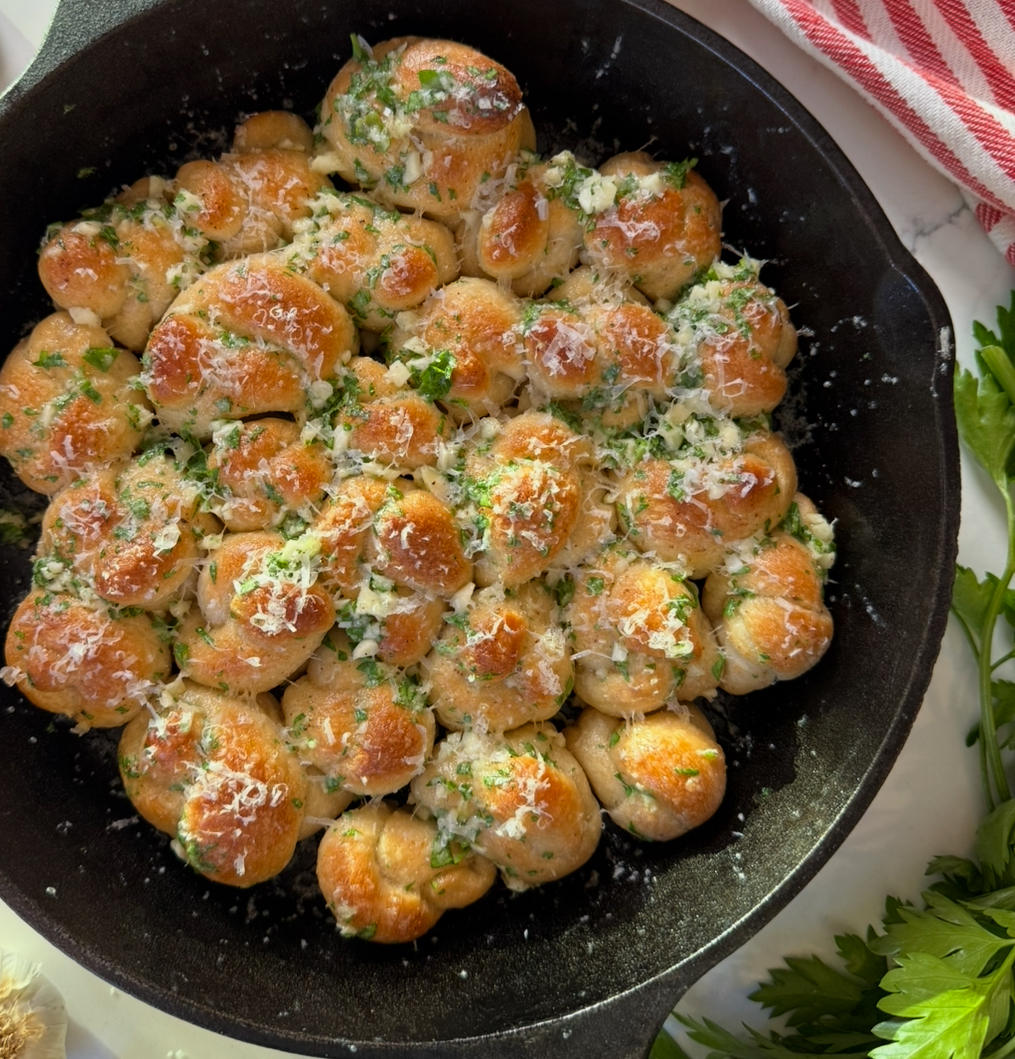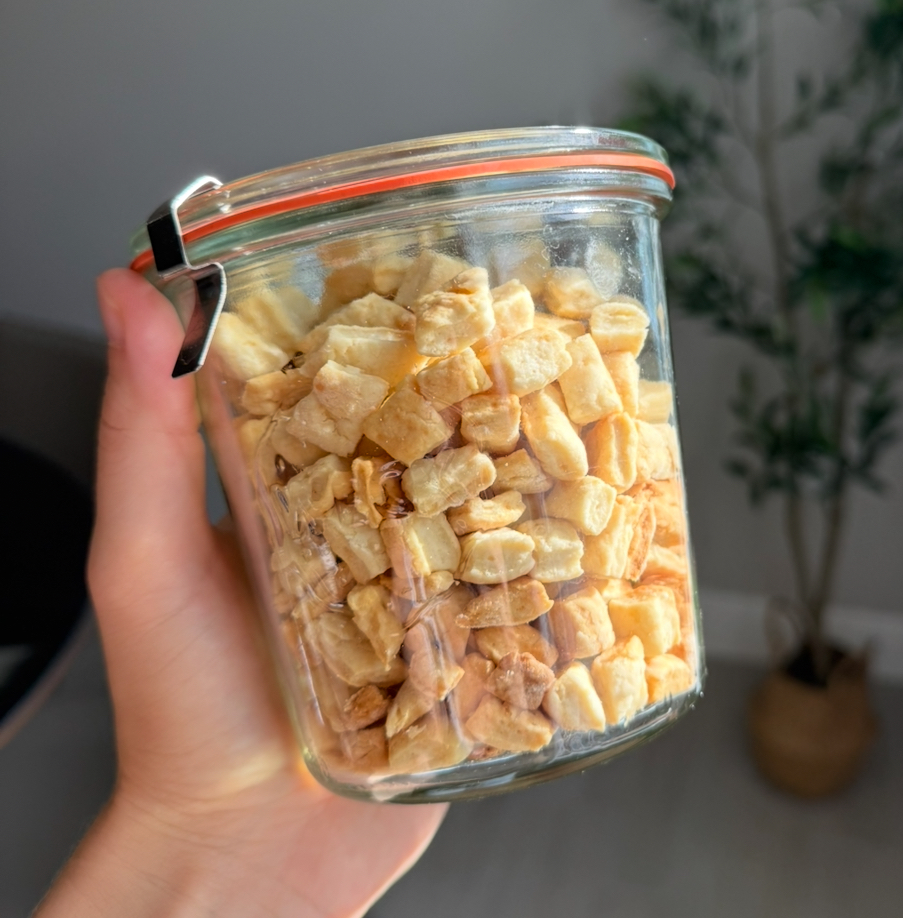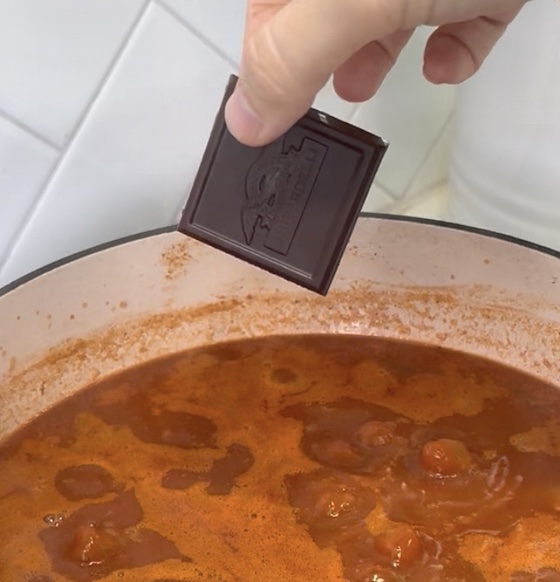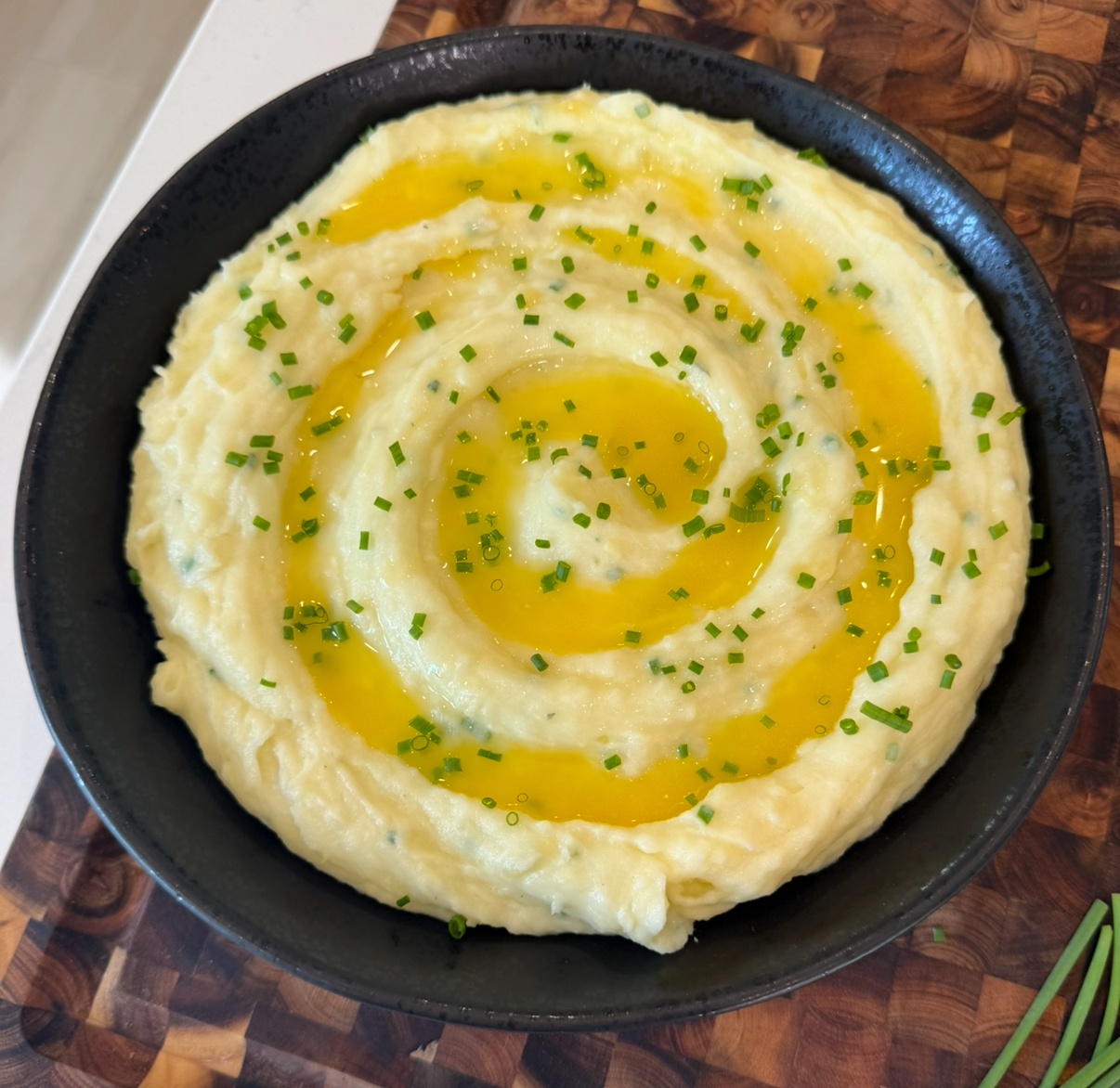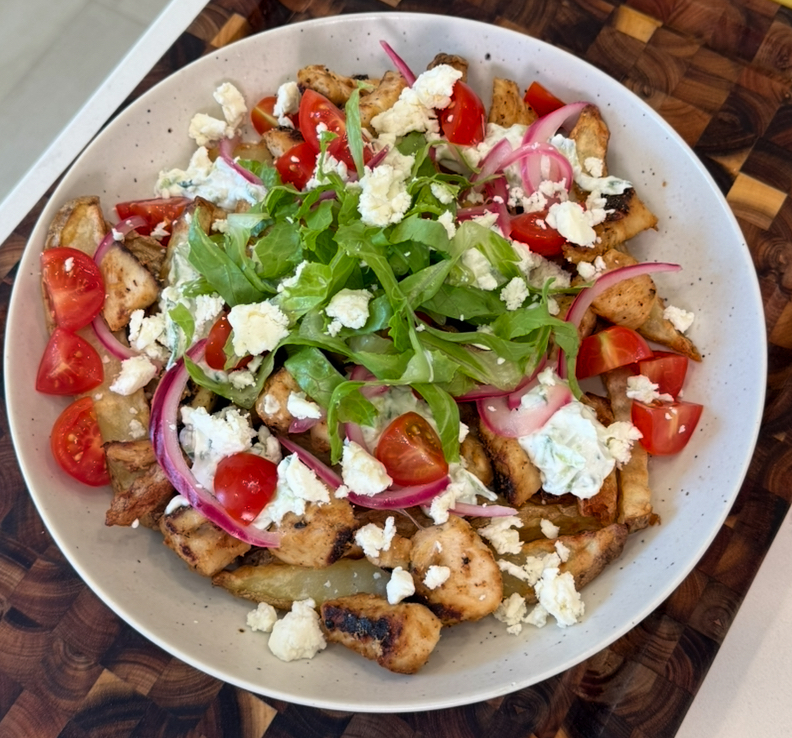If you’re craving a cozy, no-fuss dinner that feels like it came straight out of an Italian countryside kitchen, this Chicken Cacciatore with Castelvetrano Olives is the one to make. It’s rich, rustic, and bursting with flavor, but simple enough to pull off on a weeknight.

What is Chicken Cacciatore?
“Cacciatore” means “hunter-style” in Italian, and this dish is traditionally made with chicken (or rabbit), simmered low and slow with tomatoes, onions, garlic, herbs, and sometimes wine. It’s the kind of hearty, one-pot meal that warms you up from the inside out.
In this version, I’m adding Castelvetrano olives- those buttery, bright green Sicilian olives that are mild, meaty, and slightly sweet. They bring a beautiful pop of flavor to the rich tomato sauce and give the dish an elegant twist.
How to Serve Chicken Cacciatore
This dish is all about comfort, so serve it up with something that’ll soak up all that flavorful sauce:
- Buttery mashed potatoes
- Creamy polenta
- Al dente pasta
- Or a warm hunk of crusty bread
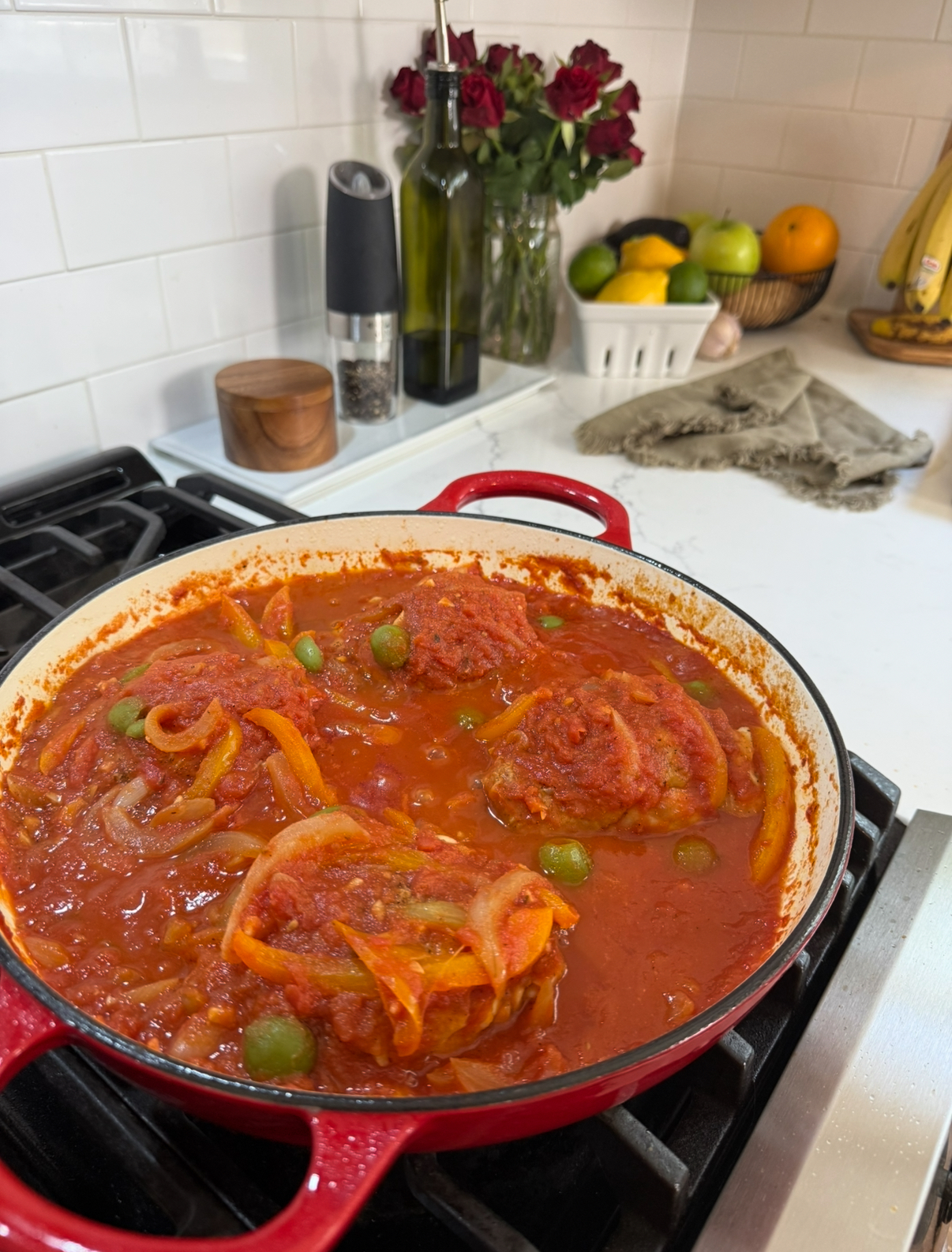
When simmering the chicken in the sauce:
- Do not stir constantly. You want the chicken to stay nestled in the sauce and cook evenly.
- Occasionally spoon the sauce over the chicken (every 10–15 minutes) to keep it moist and flavorful.
- If the sauce starts to stick or reduce too much, give a gentle stir around the edges or bottom, but avoid breaking up the chicken.
Make It Your Own
- Use boneless thighs for quicker cooking.
- Add mushrooms for extra earthiness.
- Swap wine for broth if needed.
- Want it spicy? Add more red pepper flakes or a pinch of chili oil before serving.
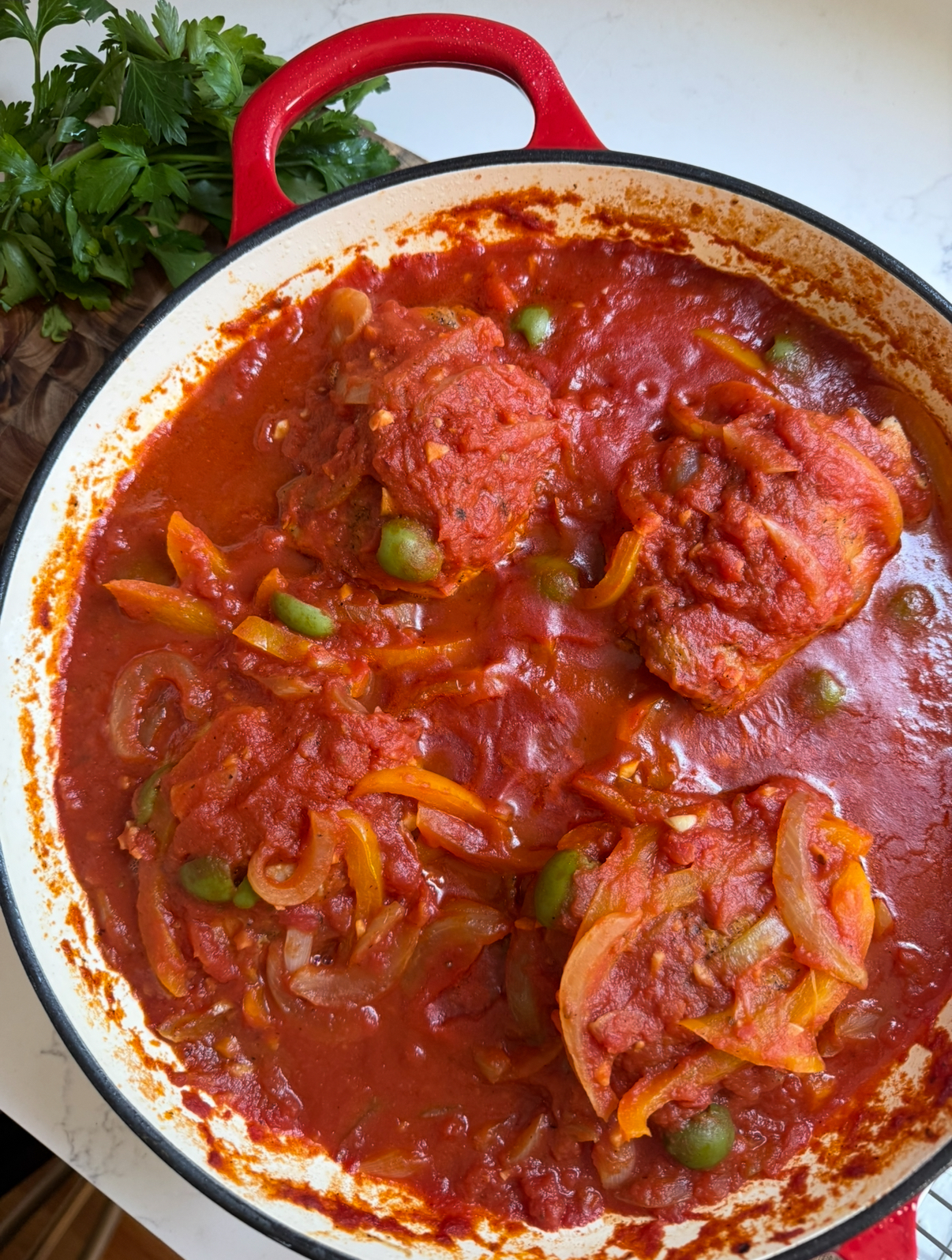
Storage & Reheating Tips
One of the best parts about Chicken Cacciatore? It stores and reheats beautifully!
To Store:
- Let the dish cool completely, then transfer to an airtight container.
- Store in the refrigerator for up to 4 days.
To Freeze:
- Place in a freezer-safe container or bag (remove the bones if you prefer).
- Freeze for up to 3 months.
- Thaw overnight in the fridge before reheating.
To Reheat:
- Stovetop: Reheat gently in a skillet over medium-low heat, adding a splash of broth or water to loosen the sauce if needed.
- Microwave: Place in a microwave-safe dish, cover loosely, and heat in 1-minute intervals, stirring between each, until warmed through.
- Oven: Place in a covered baking dish and reheat at 350°F (175°C) for 20–25 minutes, or until hot.
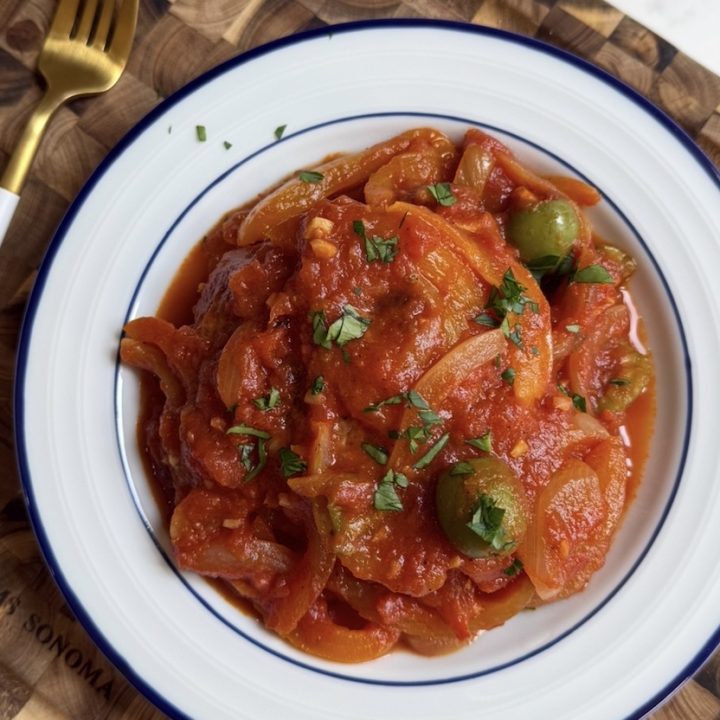
Rustic Chicken Cacciatore
Ingredients
- 4 bone-in, skin-on chicken thighs (or drumsticks, or a mix)
- Salt and pepper to taste
- 2 tbsp olive oil
- 1 medium onion, sliced
- 1 bell pepper, sliced (red or yellow preferred)
- 3 cloves garlic, minced
- 1/2 cup dry white wine (or chicken broth)
- 1 (14.5 oz) can crushed tomatoes
- 1/2 cup Castelvetrano olives, pitted and halved/squished
- 1 tsp dried oregano
- 1 tsp dried thyme or Italian seasoning
- 1 bay leaf
- Pinch of red pepper flakes (optional)
- Fresh parsley or basil, for garnish
- Optional for serving: mashed potatoes, pasta, polenta, bread, etc.
Instructions
- Season chicken with salt and pepper. Heat olive oil in a large skillet or Dutch oven over medium-high heat. Sear chicken, skin side down, until golden brown (about 4–5 minutes per side). Remove and set aside.
- In the same pan, add onions and bell pepper. Sauté until softened (about 5–6 minutes), then stir in the garlic for another minute until fragrant.
- Pour in white wine and scrape up any browned bits. Let it simmer for 2–3 minutes to reduce slightly.
- Add the crushed tomatoes, oregano, thyme, red pepper flakes (if using), bay leaf, and Castelvetrano olives. Stir to combine.
- Nestle the chicken into the sauce, skin side up. Cover, reduce heat to low, and simmer for 30–40 minutes until chicken is tender and cooked through. Spoon some sauce over the chicken halfway through.
- Remove the bay leaf. Taste and adjust seasoning. Sprinkle with fresh parsley or basil before serving. Enjoy!



